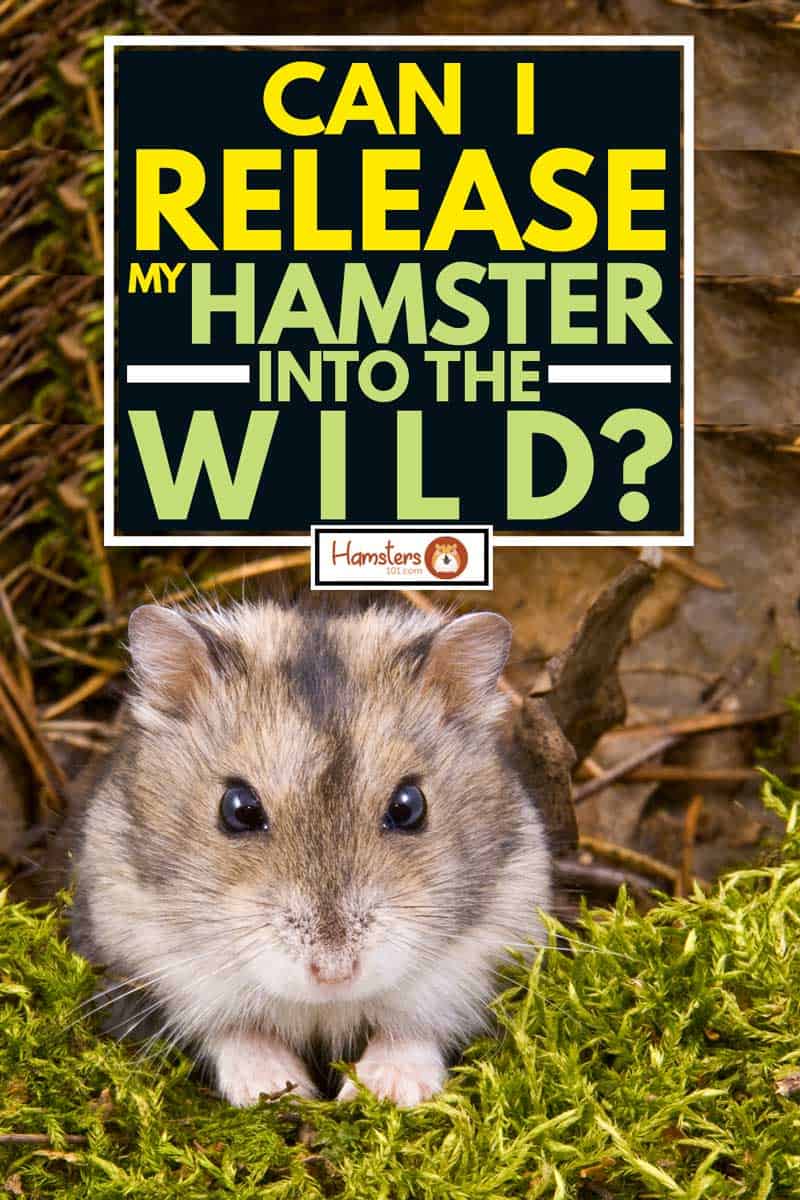 All the time, people decide that they can’t keep pets, including hamsters. If you’re in such a predicament, you might not know what to do. Can you release your hamster into the wild? We've researched the topic in-depth to help you make the best possible decision for your little furry buddy.
All the time, people decide that they can’t keep pets, including hamsters. If you’re in such a predicament, you might not know what to do. Can you release your hamster into the wild? We've researched the topic in-depth to help you make the best possible decision for your little furry buddy.
You should never release a hamster outside. Since your hamster is a domesticated animal, it lacks the survival instinct to feed and care for itself. It will die. You won't be releasing him into the wild - you'll be sending the little critter out to certain death.
This may be shocking to hear, but it’s true. In this article, we’ll tell you everything you need to know about domesticated versus wild hamsters, including which category your pet falls into. If you can no longer care for your hamster, we’ll explain the ways of finding it a new furrever home.
Reasons You May Want To Release Your Hamster into the Wild
Before we discuss why you can't release your hamster, we should talk about the reasons why you might want to do so.
Hamsters can be expensive to keep
There are several reasons you may consider releasing your hamster into the wild. The first of these may have to do with the cost required to maintain a healthy, happy pet. While hamsters are far more inexpensive to buy than a cat or a dog, they do need consistent and regular care just like those animals.
You have to buy them a cage, food, a water bottle, and nesting and bedding material. You also must replace these items from time to time.
Hamsters need stimulation and exercise. To provide this, you should get them climbing and chewing toys. In a pinch, a tissue box or toilet paper tube can suffice for playing and exploring. Speaking of exploring, you’ll need to invest in a hamster ball. Finally, having a sleeping space like a hiding box or a hamster house also goes a long way towards your hamster’s wellbeing.
It can be time-consuming to care for a hamster
Perhaps the cost for these items wasn’t the issue. You had thought when you bought or received a hamster that caring for it would be easy. You figured you could just clean it every so often and that was about it. Now you’ve learned that isn’t the case. The work necessary for keeping your hamster has led you to reconsider if this is the right pet for you.
And maybe someone else in your family was the one who wanted the hamster, and now you're the one stuck with keeping the little thing alive and happy - and can't or prefer not to do that.
So, why not just let a hamster loose outside?
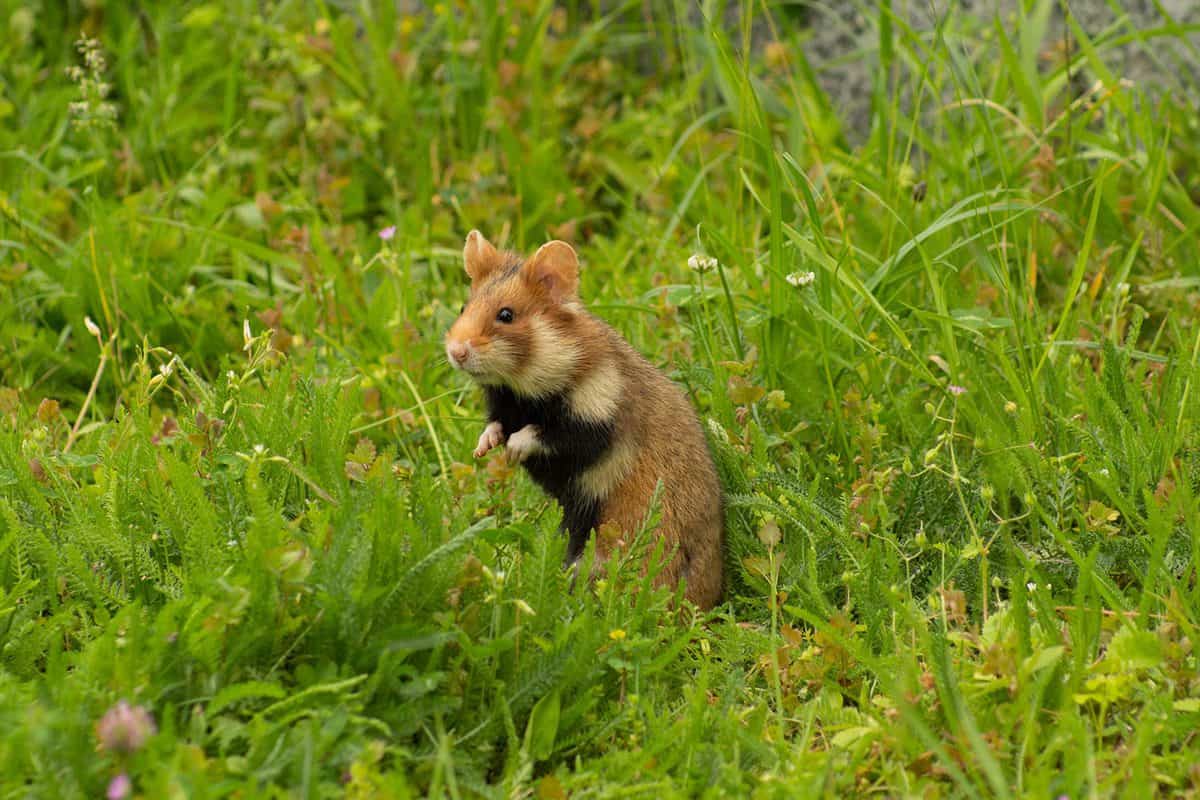
For the above or other reasons, you’ve decided that you can’t give your hamster the happy home it deserves. Although you’ve tried, you can’t find anyone in your circle of family and friends who wants a hamster, either. You’ve decided your only option then is to release the animal "into the wild".
Can you set your hamster free in the woods near you or even at a local park? Sure, you can, but it’s almost never in the animal’s best interest to do so. We’ll discuss more why this is in the next sections, but it’s almost always a fatal move for your hamster.
Let’s look more into three of the most popular hamster species: Syrian hamsters, Roborovski hamsters, and Siberian hamsters. Each of these species has wild roots, but does that mean they can live in the wild?
Syrian Hamsters

Syrian hamsters, also known as golden hamsters, are used to dryer climates such as southern Turkey and northern Syria. Although a threatened species in their countries of origin, they are quite common choices for those who want a pet hamster.
So yes, Syrian hamsters naturally occur in the wild. There, they will burrow underground and make a home. They tend to appear at twilight, making them crepuscular creatures. This habit prevents exposure to cold evening temperatures. Also, by avoiding the nighttime hours, when more predators are out, they can increase their survival.
In about 24 hours, Syrian hamsters are able to move between two and five miles if they’re running. That makes them fast travelers. When it comes to food, Syrian hamsters have sufficient cheek pouches for the collection and transportation of food. They will often stash their food supply in their own natural nesting space. The hamsters will be sure to make waste somewhere else to keep food clean. They even will dispose of rotten and moldy food among their hoards.
Roborovski Hamsters
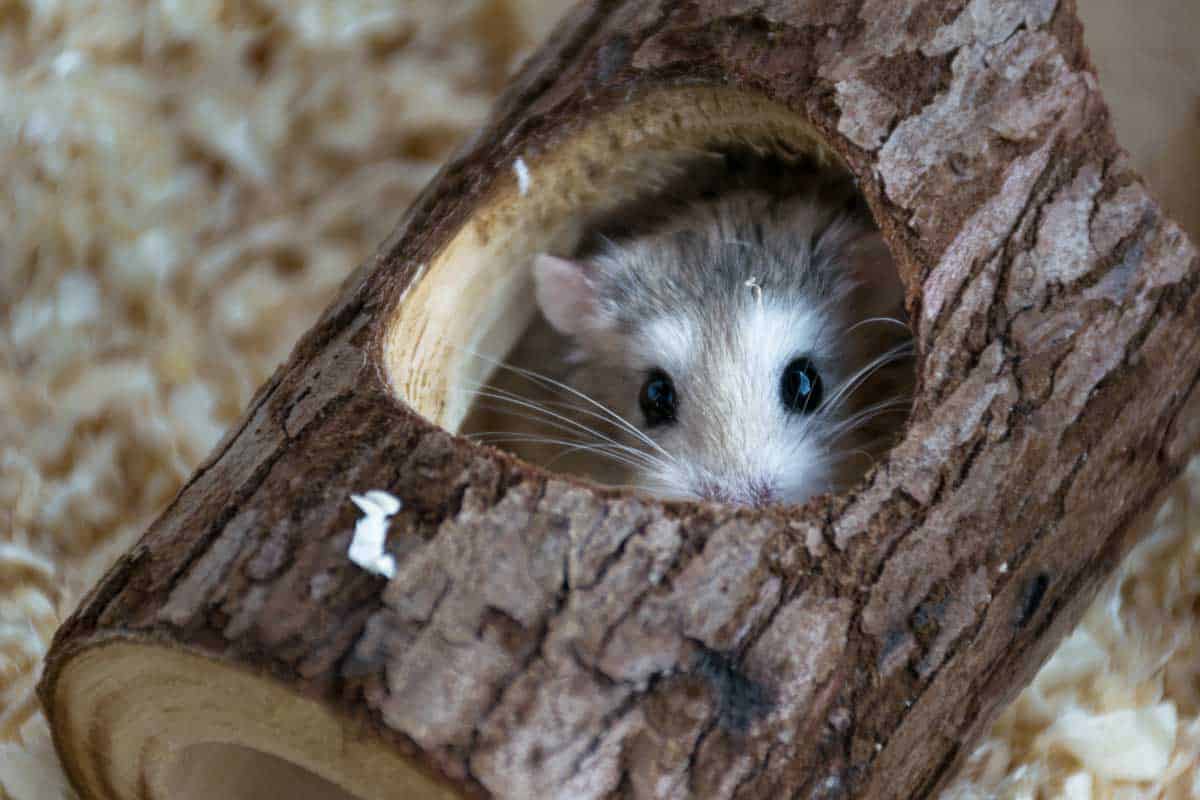
Roborovski hamsters are often referred to as dwarf hamsters due to their small stature. They have another nickname as well: the desert hamster. Robo hamsters have a three-year lifespan in captivity and a two-year lifespan in the wild.
Their natural habitat is desert-like conditions, including parts of China (Xinjiang), Mongolia, Tuva, and Kazakhstan (particularly the Lake Zaysan basin). There, they’ll dig into the sand and create six-foot tunnels and burrows in which to live.
Another crepuscular hamster species, Robos will also venture out of their burrows in the morning hours. Here, they will look for plants, fruits, vegetables, and grains to eat. Although they’re known as omnivorous, sometimes Robos will enjoy insects or meat as necessary. Their burrows contain food chambers for keeping omnivorous treats over the long winter.
While they can survive on their own, their lifespans tend to be shorter, as we pointed out. Robos don’t live long in general, but you can get more time with them when they’re kept as pets.
Siberian Hamsters
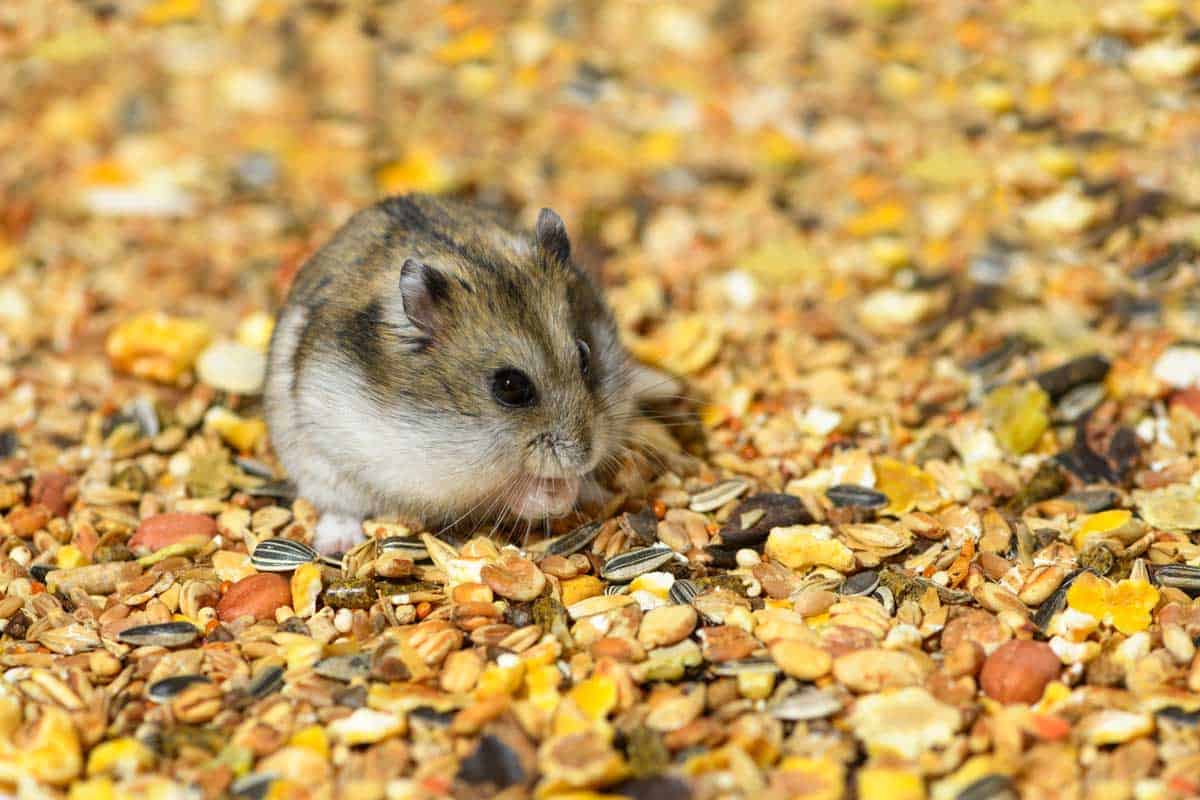
Finally, there’s the Siberian or Djungarian hamster. Other names for this species include the Russian winter white dwarf hamster, the Siberian dwarf hamster, the striped dwarf hamster, and the Dzungarian hamster. No matter what you call it, this is another small species.
One noteworthy feature of Siberian hamsters is that their fur changes colors, lightening to white over the winter. If you have one as a pet, this is less likely to occur.
Siberian hamsters call several places home: Manchurian birch stands, Siberian and Mongolian meadows, Kazakhstan’s wheat fields, and the whole of Dzungaria.
Much like the other hamster species we covered, Siberian hamsters will create burrows for hiding, breeding, eating, and sleeping. Their burrows are admittedly more complicated, often with six points of entry. The Siberian hamster will even plug five of those entrances using wool when the winter arrives.
Wild vs. Domesticated Hamsters
The three species of hamsters we wrote about above do all indeed originate in the wild and can survive there. That said, there’s a big difference between wild and domesticated hamsters.
Wild hamsters and other animals are just that. They live in the wild, they eat and mate there, and they thrive there. If you were to approach a wild hamster, it will run away. When cornered, it might try to bite or scratch you because its survival instincts kick in. A wild hamster is raised by its mother to know its surroundings. She teaches him where food and water sources are and how to seek shelter. If you were to relocate even an entirely wild hamster to a different territory, its odds of survival would be poor.
Then there are domesticated hamsters.
A domesticated pet is bred to be calmer and tamer. That doesn’t mean a domesticated hamster can’t attack, but the likelihood is much lower. Another major difference between wild and domesticated hamsters is their survival instinct. Wild hamsters have a keen survival instinct because they have to if they want to live.
Domesticated hamsters may have little to no survival instinct. They come from a line of hamsters that were all pets. The hamster relies on you for fresh food and water, bedding changes, and other elements of survival.
Never let a pet hamster go in the wild!
Left to their own devices outdoors, a pet hamster wouldn't have a clue on where to find water, appropriate food, or shelter. Most likely, a predator - such as a dog, cat, or wild animal - will get to them soon enough. Otherwise, they'll probably starve to death or die from dehydration or exposure.
When you put a hamster just like that in the wild, it doesn’t know what to do. It will not suddenly remember its ancestors and learn to burrow and forage. Instead, the hamster will die.
So you should never release your hamster into the wild. A hamster that is released in the wild will likely suffer from malnutrition and exposure, experiencing a slow and painful death due to this.
While hamsters do enjoy running and playing, they are pets and are not accustomed to living outdoors. Although their ancestors may have lived in the wild at one point after many years of rearing their lineage became domesticated, they no longer have any instincts for living outdoors.
Alternatives to Releasing Your Hamster in the Wild
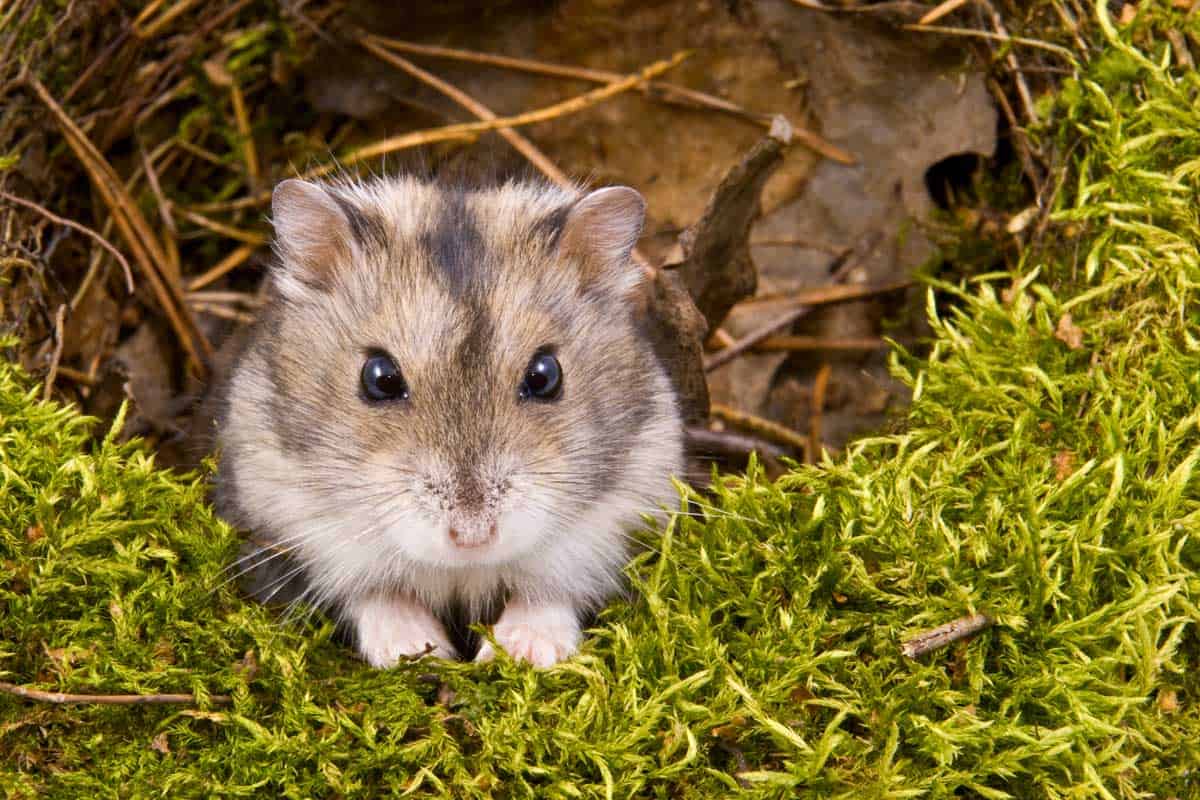
Given that you can count on your hamster having a near-zero chance of survival in the wild, you may have second thoughts about releasing it.
That’s a good thing.
After all, you love your hamster deep down, but you just can’t take care of it for one reason or another. You don’t want to kill it.
Luckily, there are plenty of other alternatives to releasing your hamster into the wild. Here are some of them:
- Ask your family and friends if they know of anyone who might want a hamster. A friend of a friend might just be interested. You never know without asking! Make sure they know what's at stake and what they'll need to care for a hamster.
- If you’re not having any luck with the people you know, you can always turn to the Internet. You can join groups and post a listing on social media offering up your hamster. Do not try to get money for your pet. Instead, focus on finding the best possible forever home for your hamster. Interview prospective adopters and make sure they are committed to providing the hamster with good care.
- Call your local shelter. Some shelters will accept small pets too. Be prepared to bring them the cage and all other associated equipment so they'll be able to keep your hamster while waiting for adopters.
- Talk to your veterinarian. He or she may know of a family who has recently lost a pet hamster and maybe looking to adopt a new one. This would be a great way to find committed adopters who are clearly taking good care of their pets.
- If you bought your hamster at a pet store, you might be able to return the hamster there. Pet stores are not ideal for any living animal but it's better than abandoning your hamster to die outside. Remember that you’re not looking for a refund, but rather a means of finding your hamster a great new home.
- If that one pet store isn’t interested in helping you or cannot, don’t give up. Try other pet stores in your neighborhood and ask if any of them would take your hamster. Again, not ideal, but better than sending the hamster to die outside.
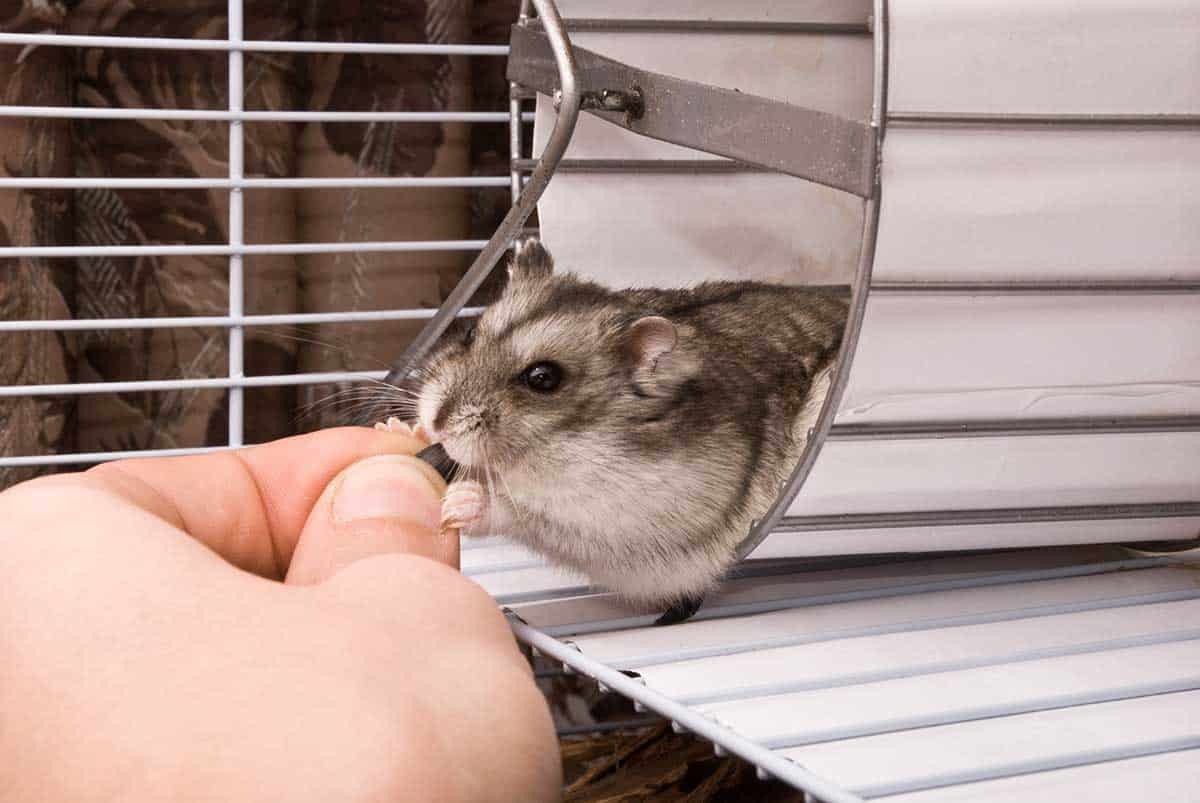
Be Smart When Rehoming Your Hamster
Remember, before you just give your hamster away, be sure to get some information on the potential buyer/taker. If you can meet them, then do so. You don’t want to inadvertently put your hamster in another bad situation. Most people who are willing to take your hamster off your hands will love and care for the animal, but it never hurts to be careful.
With so many options at your disposal, releasing your hamster outside is the worst of these ideas. It might take some time and patience to find a new owner for your hamster, that’s true. At least going about it this way, you can ensure that your hamster’s chances of survival are much higher than letting it free in the wild.



